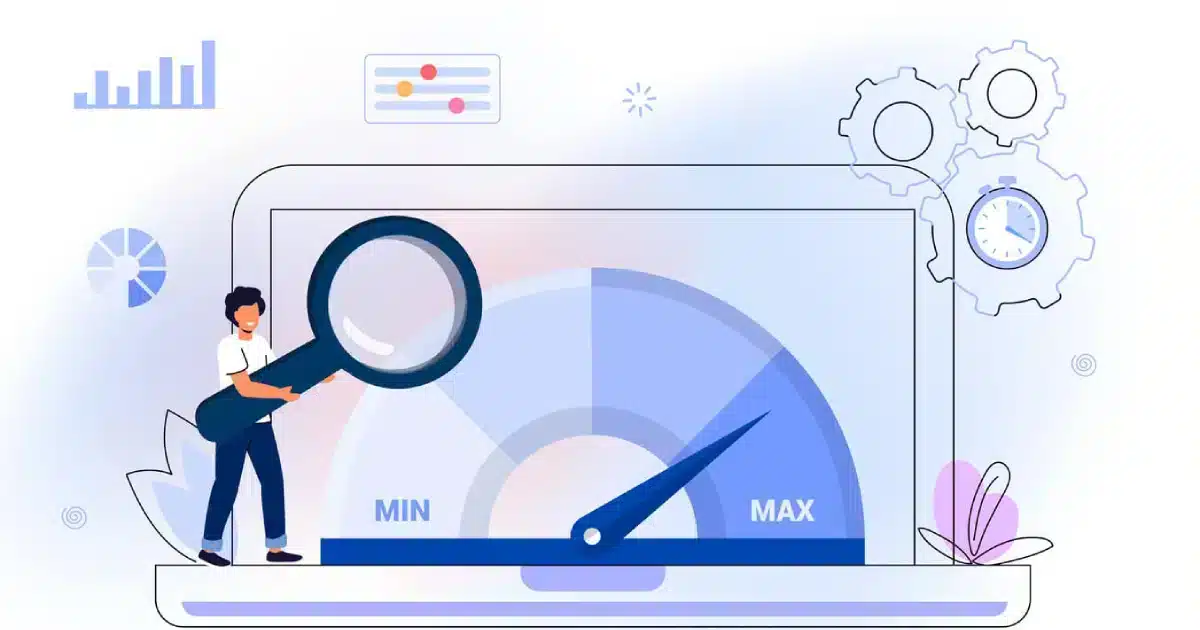Optimizing landing pages is crucial for any business looking to generate leads and drive conversions online. But how do you know if your landing pages are actually successful? The key is tracking and measuring landing page metrics that indicate how well your pages are performing. This allows you to identify issues and make data-driven improvements over time.
In this detailed guide, we’ll cover the most important landing page metrics to measure, along with tips on how to analyze and apply insights from the data. With the right approach, you can unlock key insights to boost conversions and get the most value from your landing pages.
Metrics for measuring landing page success:

Here are some of the most essential metrics to measure for gauging the success of landing pages:
Pageviews
This metric tracks how often your landing page is loaded. More pageviews mean your page is getting found by your target audience. Monitor pageviews to see how traffic levels change over time. Spikes or drops can indicate issues like technical problems, external linking changes, or a need to refine marketing campaigns.
Bounce Rate
Bounce rate is the percentage of visitors who land on a page and leave without any other interactions. High bounce rates suggest your page isn’t relevant or engaging for visitors. Check if your copy, offers, or design could be improved to reduce bounces.
Average Time on Page
This metric shows how long visitors spend on your landing page on average. Longer time on page indicates your content keeps visitors’ attention. Short times may mean your page lacks value for users. Use heatmaps to see what areas hold attention.
Landing Page Conversion Rate
Conversion rate reveals what percentage of your landing page visitors complete your desired goal action. Improving conversion rates is usually the main priority. Use A/B testing to try different page variants and optimize this metric.
Exit Rate
The exit rate shows the percentage of visitors who leave your landing page without any conversions. Lower exit rates mean more visitors convert. Review your page content flow and conversion points to identify drop-off issues.
Cost Per Lead
For paid landing page traffic, cost per lead measures how much you spend on average to generate a lead. Lower cost per lead means greater return on ad spend. Test different offers, headlines and channels to reduce cost per conversion.
Using Metrics to Optimize Landing Pages

Once you’ve started collecting data on these essential landing page metrics, the next step is learning how to analyze and apply the insights:
Set Benchmarks
Look back at previous landing page performance and establish realistic goals for metrics like conversion rate, cost per lead, and time on page. These become your baseline benchmarks for optimization efforts.
For example, your initial benchmark goals could be:
Sample Landing Page Metrics Benchmark Table
| Metric | Benchmark Goal |
|---|---|
| Pageviews | 1,000/month |
| Bounce Rate | <40% |
| Time on Page | 1-3 minutes |
| Conversion Rate | 2-4% |
| Cost Per Lead | $5-15 |
Identify Low Points
Pinpoint areas that aren’t hitting your desired benchmarks. Maybe bounce rates are too high on your contact page, or email lead generation cost more than expected. Focus optimization efforts on improving these weak points.
Compare Page Variants
Use A/B testing to try slightly different versions of landing pages and see which variant performs best for key metrics. This reveals opportunities to improve elements like headlines, testimonials, or call-to-actions.
For example, your A/B test findings could look like:
Landing Page A/B Test Results
| Page Version | Conversion Rate | Time on Page | Bounce Rate |
|---|---|---|---|
| A (Original) | 2.1% | 1:05 min | 48% |
| B (Updated CTA) | 2.5% | 1:24 min | 44% |
| C (More Visuals) | 2.7% | 1:14 min | 40% |
This data clearly indicates Version C should be the new winner to launch based on performance.
Monitor Changes Over Time
Regularly analyze metrics to see how landing pages perform over longer periods. Watch for emerging trends, seasonality effects, or sudden shifts that indicate a need for changes.
Review Funnel Metrics
Beyond the landing page, examine metrics across your entire conversion funnel. See where drop-off happens and optimize those steps to improve overall conversion rates.
Align With Business Goals
Consider landing page metrics in context of wider business goals and targets. Conversion rates mean less if the leads generated don’t become customers. Ensure your metrics measure what matters most.
By continuously measuring, testing, and optimizing based on landing page metrics, you’ll gain the insights needed to improve conversion rates and return on investment from these essential pages.
Measuring key landing page metrics provides the crucial foundation you need to improve conversion rates and return on investment from these important touchpoints. By continuously monitoring and testing page variants using essential data like pageviews, bounce rate, conversions, scroll depth, and more, you gain actionable insights for optimization.
Just be sure to analyze metrics in context of your overall business goals and funnel performance. Pay extra attention to gaps in visitor engagement based on scroll patterns and time on page. For long-form preplexity content, leverage checkpoints and link click-throughs to identify areas for better explanation.
With the powerful combo of landing page best practices and metrics-driven improvements, you can craft pages that engage audiences and deliver tremendous value for your business. Use these tips to unlock the full potential of your landing pages.
FAQs:
For most industries, a good initial conversion rate benchmark is 2-4%. The exact target will depend on your business model and lead types. With ongoing optimization, strive for 5-8% or more over time.
Many tests take 1-2 months to produce statistically significant results. However, quick wins are possible by fixing obvious issues early. Allow time for changes to accrue data, especially when testing full page redesigns.
Focus first on improving conversion rate, as this metric is tied to business revenue. Once you have a high-converting page structure, longer time on page can help further boost conversions. Don’t sacrifice conversions only to inflate time metrics.
Check core metrics at least weekly initially. Once pages are more established, monthly reviews are sufficient unless you are actively testing new variants. Set up alerts for unexpected metric changes.
Google Analytics provides most standard metrics for free. Many landing page and email services also have built-in analytics. For advanced tracking, heatmaps, and A/B testing, dedicated landing page tools are recommended.
If your pages get traffic but few conversions, focus on optimizing page copy, offers, and layouts through A/B testing. Also ensure your traffic sources are aligned with your target audience and campaign strategy.
Our Related articles
 Anas is our go-to copywriter with a knack for crafting persuasive and high-converting eCommerce landing pages. His passion for words and understanding of consumer psychology helps turn visitors into loyal customers. When he's not refining his copy, Anas enjoys exploring the latest digital marketing trends and experimenting with new writing techniques. His blend of creativity and strategic thinking makes him an indispensable part of our energetic team.
Anas is our go-to copywriter with a knack for crafting persuasive and high-converting eCommerce landing pages. His passion for words and understanding of consumer psychology helps turn visitors into loyal customers. When he's not refining his copy, Anas enjoys exploring the latest digital marketing trends and experimenting with new writing techniques. His blend of creativity and strategic thinking makes him an indispensable part of our energetic team.












